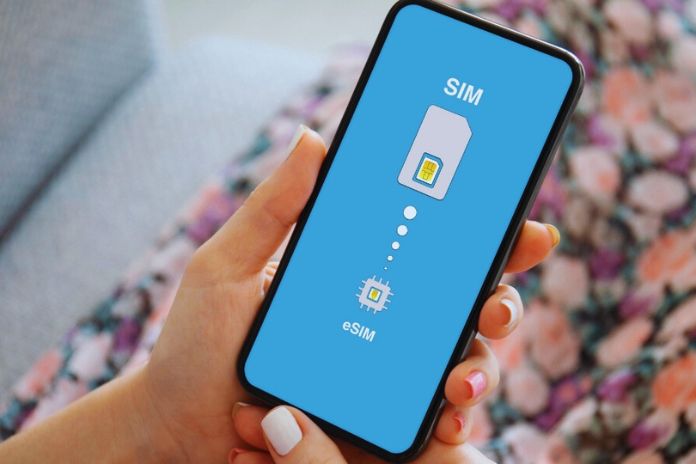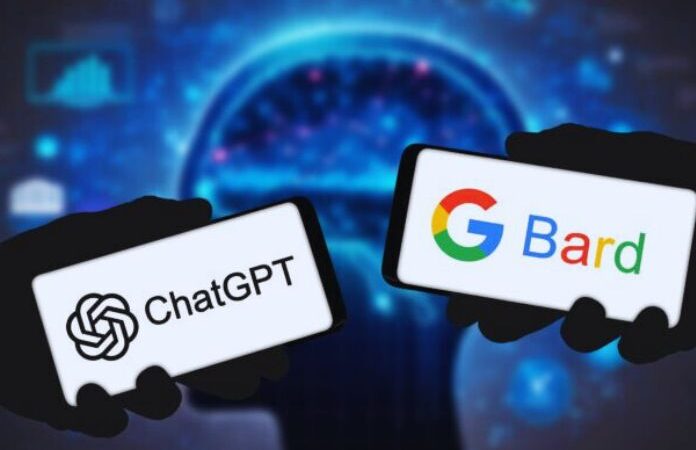eSIM: Permanently Installed SIM Instead Of An Exchangeable Card

The eSIM (“embedded SIM”) is a firmly integrated chip and can be set to different mobile phone providers via a radio signal. But how exactly does the eSIM work, and what does it mean for the end user? The eSIM (“embedded SIM”) is a SIM card that is permanently installed in the device and can be programmed from the outside, the hardware of which cannot be replaced. It is around six by five millimeters and one millimeter thick, significantly smaller than a nano-SIM. The permanently integrated SIM card can be reprogrammed using the software.
This allows users to switch carriers and activate or connect new devices without swapping the SIM card in their phone, tablet, smartwatch, and other devices. When concluding a new contract or purchasing a prepaid card, the customer receives an additional QR code, scanned with the smartphone, and the usual PIN and PUK numbers for unlocking the SIM card. The network operator gets data onto the card firmly integrated into the device. The card data can be transferred from the cell phone to other devices via Bluetooth, such as connecting smartwatches or fitness bracelets to the cell phone network.
After the end of the contract, the information on the eSIM will be deleted or rewritten by the agreed conditions. Depending on the device model, several eSIM profiles can be saved in parallel and used alternately – for example, if you have mobile phone contracts from different countries and want to use them, depending on where you are. Telekom and Vodafone first offered the eSIM for the Apple and Samsung Galaxy Watch. o2 followed later. In addition, there is a special version of the eSIM for various iPad models from Apple, which comes with fixed providers and tariffs that the customer cannot change. At the same time, these tablets also offer a slot for a conventional nano-SIM.
Table of Contents
Network Operators Are Offering The First eSIM Tariffs
Originally designed for M2M applications (machine-to-machine), the eSIM has long been used in navigation devices and e-book readers, for example, in some Kindle models. However, the number of eSIM devices on offer has been limited in the mobile communications sector. Vodafone started marketing the UMTS version of the Samsung Gear S2 smartwatch in March 2016, followed a few weeks later by the o2. However, the devices were hardly available in practice.
Besides the Apple SIM in the iPads, eSIMs for private customers started with the Apple Watch Series 3 and the Samsung Galaxy Watch. Customers can add the integrated SIM card to their existing mobile phone contract like a normal MultiSIM. Depending on the tariff, these costs are between 0 and 29.95 euros per month with Telekom and between 5 and 10 euros per month with Vodafone. In the following, you will learn more about the predecessor Apple SIM, the advantages and disadvantages of the eSIM, and what plans there are for the integrated SIM card.
The Apple SIM As The Forerunner Of The eSIM
The basic idea of the programmable SIM card is not new. Apple launched the Apple SIM back in 2014, which made it possible to select data plans from local mobile phone providers directly on the iPad. According to the manufacturer, the Apple SIM can be used in more than 90 countries and can be switched to different providers via radio signal. Only some Apple tablets have the Apple SIM on board as an eSIM. Depending on the model, the module is supplied as a conventional nano-SIM, while the current iPad Pro versions are equipped with the permanently installed operator card.
eSIM Offers Advantages For Users And Manufacturers
The major network operators and smartphone manufacturers are extremely optimistic about the new technology. There are advantages and disadvantages for the user in equal measure. On the one hand, it is advantageous to save multiple profiles to switch providers on the fly. On the other hand, reading in and activating a new eSIM profile requires an online connection, which may lead to restrictions when traveling: Is there a hotspot on the plane to activate the eSIM? Is public WLAN access at the airport secure so sensitive data can be transmitted without hesitation? In turn, users no longer have to deal with multiple “hardware SIM cards” that can quickly be lost.
In addition, when buying a new mobile phone, customers no longer have to pay attention to compatible SIM formats or even process the old card with the SIM card punch. The integrated card offers numerous advantages for manufacturers, especially when designing new models. Since the eSIM is significantly smaller than traditional SIM cards, smaller, lighter devices can be designed. In addition, the eSIM is less sensitive to shocks and temperature fluctuations. Because an opening for the slot is no longer necessary, it is also easier to construct dust-resistant and waterproof devices.
Outlook: The Future Of The eSIM
Problems are expected, especially in the transitional period, as only a few providers and discounters support the new technology alongside the network operators. Even when traveling abroad, the provider you are considering for a local prepaid card does not yet offer the eSIM. However, there are now numerous smartphones that can also accommodate a conventional nano-SIM in addition to the integrated operator card.
Also Read: API Gateways: What They Are, What They Are For And Examples






